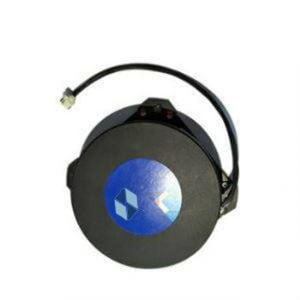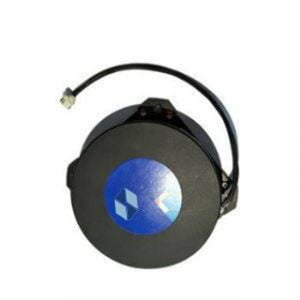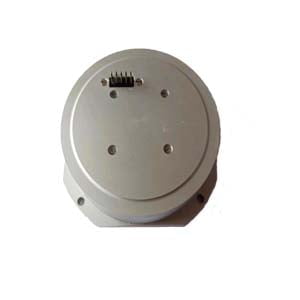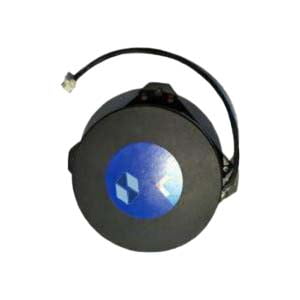Fiber optic gyroscopes have significant advantages such as long life, high reliability, and good adaptability to space environments as an all-solid-state inertial instrument. They have been widely used in various foreign aerospace vehicles. With the rapid development of FOG gyroscope, they are used on various aerospace vehicles such as navigation satellites, communication satellites, remote sensing satellites, manned spacecrafts, and lunar probes. They have played an important role in promoting the rapid improvement of the performance of China's aerospace vehicles.
1.Basic introduction
FOG gyroscope is an all-solid-state inertial instrument based on the Sagnac effect. It is composed of optical devices and electronic devices and has no rotating parts. It has good reliability, long life, high resolution, wide accuracy coverage, vacuum resistance, radiation resistance, etc. Many features. The FOG gyroscope determines its own angular velocity by detecting the phase difference of two beams of light running opposite each other in the fiber optic ring. It is precisely because of its principle and structural advantages that it has obvious advantages in the aerospace field and has become the mainstream of aerospace gyro instruments. One of the products.
2.Main technical requirements for fiber optic gyroscope aerospace applications
As a key component of the aerospace vehicle control system, the gyroscope is crucial to the normal operation of the aircraft. The application of FOG gyroscope in the aerospace field focuses on meeting special environmental adaptability and special application requirements. The typical technical requirements for inertial components of satellites are shown in Figure 1. Its particularity is mainly reflected in: (1) Long life and high reliability. At present, the life requirements of most aerospace vehicles are more than 8 years, and the life requirements of some high-orbit navigation and communication satellites are more than 15 years. (2) Good adaptability to space environment. For fiber optic gyroscopes, the key concerns in the space environment are irradiation and thermal vacuum. At present, low-orbit satellites require gyroscopes with radiation resistance greater than 50 krad (Si). High-orbit satellites have an even harsher radiation environment, requiring FOG with radiation resistance greater than 100 krad (Si). Different types of satellites have different operating temperature requirements in vacuum environments, but the common temperature range is -40°C ~ +60°C. Not only is reliability required within the operating temperature range, but long-term accuracy must also be maintained.
Its particularity is mainly reflected in: (1) Long life and high reliability. At present, the life requirements of most aerospace vehicles are more than 8 years, and the life requirements of some high-orbit navigation and communication satellites are more than 15 years. (2) Good adaptability to space environment. For fiber optic gyroscopes, the key concerns in the space environment are irradiation and thermal vacuum. At present, low-orbit satellites require gyroscopes with radiation resistance greater than 50 krad (Si). High-orbit satellites have an even harsher radiation environment, requiring FOG with radiation resistance greater than 100 krad (Si). Different types of satellites have different operating temperature requirements in vacuum environments, but the common temperature range is -40°C ~ +60°C. Not only is reliability required within the operating temperature range, but long-term accuracy must also be maintained.
3.Main technical solutions and characteristics of fiber optic gyroscopes for aerospace use
Relative intensity noise suppression technology: The relative intensity noise of the light source is one of the main factors affecting the random walk of the FOG. In high-precision fiber optic gyroscopes, the relative intensity noise accounts for more than 90% of the total noise of the optical path. The use of optical path subtraction technology can reduce the relative intensity noise of the light source and improve the precision performance of the gyroscope. The basic principle is shown in Figure 2. In the gyro optical path, the part between the light source and the gyro closed loop is replaced with a fully polarization-maintaining intensity noise compensation optical path (including polarizer, polarization-maintaining coupler, isolator and detector). Among them, the polarization-maintaining optical fiber between the isolator and the coupler is spliced at 90° to the axis. The interference light of the main optical path enters the polarization-maintaining coupler along the fast axis, and the light of the reference optical path passes through the coupler and enters the polarization-maintaining coupler along the slow axis. By adjusting the melting point loss of each optical path and the Y waveguide modulation depth, the optical power of the two beams is equal and configured at the same time. The corresponding signal demodulation circuit can realize the subtraction of the relative intensity noise signal of the light source.
In the gyro optical path, the part between the light source and the gyro closed loop is replaced with a fully polarization-maintaining intensity noise compensation optical path (including polarizer, polarization-maintaining coupler, isolator and detector). Among them, the polarization-maintaining optical fiber between the isolator and the coupler is spliced at 90° to the axis. The interference light of the main optical path enters the polarization-maintaining coupler along the fast axis, and the light of the reference optical path passes through the coupler and enters the polarization-maintaining coupler along the slow axis. By adjusting the melting point loss of each optical path and the Y waveguide modulation depth, the optical power of the two beams is equal and configured at the same time. The corresponding signal demodulation circuit can realize the subtraction of the relative intensity noise signal of the light source.
4.Summary
The development of fiber optic gyroscopes for aerospace is also facing the challenge of higher technical requirements posed by new space missions in the future. Ericco also needs to further make breakthroughs in fiber optic gyroscopes and inertial systems in ultra-high precision, longer life, lighter weight and lower power consumption. Difficult technologies in terms of smaller size and mass to promote the continued development of aircraft technology. At present, we have high-precision fiber optic gyroscopes and cost-effective FOG gyroscopes. If you are interested, please feel free to inquire.
More Technical Questions
1.Processing and Analysis of Random Drift Error Based on Fiber Optic Gyroscope
2.Analysis of Temperature Drift Compensation Method for Fiber Optic Gyroscope
3.Analyze the Temperature Effect Mechanism of Fiber Optic Gyroscope
4.Application of Fiber Optic Gyroscope in oil drilling field
5.Application of fiber optic gyro in underground pipeline
Products in Article







